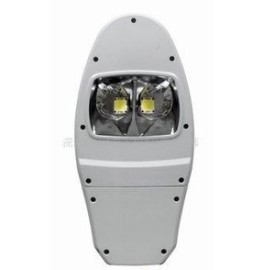 With the continuous progress of society and continuous development of science and technology, more and more countries and regions have begun to attach importance to energy conservation and emission reduction and create a good ecological environment. As Australia's first government agency to achieve carbon neutrality, the Sydney City Council is also actively working on energy conservation and emission reductions. In order to implement the current concept of green environmental protection, Sydney City Hall is one of the first pilot demonstration projects, laying a large-scale solar photovoltaic panel matrix on the roof of the building. This historic old building is also covered with “technology fashion.â€
With the continuous progress of society and continuous development of science and technology, more and more countries and regions have begun to attach importance to energy conservation and emission reduction and create a good ecological environment. As Australia's first government agency to achieve carbon neutrality, the Sydney City Council is also actively working on energy conservation and emission reductions. In order to implement the current concept of green environmental protection, Sydney City Hall is one of the first pilot demonstration projects, laying a large-scale solar photovoltaic panel matrix on the roof of the building. This historic old building is also covered with “technology fashion.†The Sydney City Hall has more than 100 years of history. People who have visited Sydney often stop here. However, many people may not be aware that some changes are quietly taking place within this stone building that has been baptized over a hundred years.
Pass through the historical lobby and take the oldest elevator in Sydney to the top of the City Hall building. This new building changes: rows of solar panels are neatly installed on the roof. Due to the special installation method, not only the installation of solar panels did not damage the slate facade of the building, but also the dark solar panels full of modern science and technology and the slate facades that were weathered by the wind and rain were quite a few. The feeling of complement each other.
“The city of Sydney plans to reduce CO2 emissions by 70% by 2030,†said Alan Jones, head of the Sydney City Office’s Office of Energy and Climate Change. “In the past, the use of thermal power to burn fossil fuels was bound to increase carbon emissions.†The use of solar power is an important part of many initiatives to reduce carbon emissions.
“80% of Sydney's existing carbon emissions are caused by coal-fired power generation,†said Sydney Mayor Crawford Moore. “Sydney’s government plans to make renewable energy power generation reach 30% by 2030. ."
It is understood that the City Hall currently has a total of 240 solar panels installed, with a peak power of 48 kilowatts and an annual total of 60,000 kilowatt-hours of electricity, which will reduce carbon emissions to a total of 1,620 tons.
In addition to making full use of solar power, the City of Sydney is also undergoing transformation of lighting technology. In the old streets of the Rocky Area, novel LED lights contrast with old roadside houses and cruise ships moored in the distance. There are 22,000 street lights in Sydney, which ranks first in New South Wales. The electricity used by public lighting accounts for 1/3 of the city's total annual energy consumption. If the new LED lighting is used, it will reduce carbon emissions by 40%, which is equivalent to an annual reduction of 2861 tons of carbon emissions. The City of Sydney plans to install LED lights throughout the city's main roads and parks for lighting within three years. This will greatly reduce the cost of municipal electricity, while achieving the effect of energy-saving emission reduction.
“Advanced LED technology has better lighting effects, more durability and more energy-saving effects.†said Nathan Dunn, General Manager of ANZ General Electric. “Compared to incandescent light sources, LED technology can save energy by 75%. Life expectancy is 25 times that of incandescent lamps. It is gratifying for the Sydney City Council to lead Australian lighting innovations."
In fact, Sydney's use of solar panels to generate power and transform public lighting facilities are just a microcosm of Australian energy conservation and emission reductions. Australia's air is pure and sunny. A few years ago, many Australians took full advantage of this and installed solar panels on their roofs to generate electricity. In order to encourage individuals to generate electricity, the state not only subsidizes the acquisition of solar panels by individuals, but also purchases solar energy from individuals at a price higher than the market price. In addition, many local governments in Australia have also actively used their local advantages to develop new energy sources. For example, on the shore of Lake George in the north of the capital, Canberra, local windmills are used to generate electricity by virtue of their abundant wind energy resources.
Optical Socket Panel, also known as optical fiber panel or information panel.The main function of the panel is to fix modules and protect cables at the information outlet.Optical Socket Panel is widely used as a termination point for the feeder cable to connect with drop cable. The fiber splicing, splitting, distribution can be done in this box, and meanwhile it provides solid protection and management for the FTTx network building. It can be used indoor or outdoor.
Optical Socket Panel
Optical Patch Panel,Fiber Optic Patch Panel,Fiber Optic Panel,Optical Socket Panel
Chengdu Xinruixin Optical Communication Technology Co.,Ltd , https://www.xrxoptic.com
